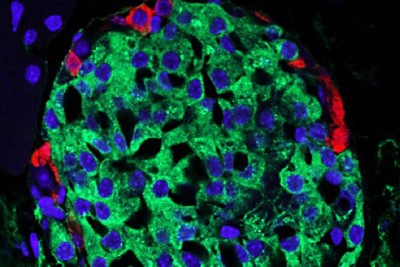June 2014 - A genetic analysis of DNA samples of approximately 3,700 Mexican and U.S. Latino individuals identified a gene variant that was associated with a 5-fold increase in the prevalence of type 2 diabetes, findings that may have implications for screening in this population, according to a study in the June 11 issue of JAMA, a diabetes theme issue.
The estimated prevalence of type 2 diabetes in Mexican adults was 14.4 percent in 2006, making it one of the leading causes of death in Mexico. Latino populations (defined as persons who trace their origin to Central and South America, and other Spanish cultures), have one of the highest prevalences of type 2 diabetes worldwide. Identifying genetic factors associated with type 2 diabetes in Latino populations could improve risk prediction and focus treatment choice based on knowledge of the underlying biology of the disease, according to background information in the study.
Karol Estrada, Ph.D., of the Broad Institute of Harvard and MIT, Cambridge, Mass., and colleagues with the SIGMA Type 2 Diabetes Consortium, performed whole-exome (part of the genome) sequencing (which captures both common and rare genetic variants in the protein-coding regions of genes) on DNA samples from 3,756 Mexican and U.S. Latino individuals (1,794 with type 2 diabetes and 1,962 without diabetes) recruited from 1993 to 2013. One variant was further tested for and association with type 2 diabetes in large multiethnic data sets of 14,276 participants.
The researchers found that a single rare variant (c.1522G>A [p.E508K]) of the HNF1A gene was associated with about a 5 times higher odds of type 2 diabetes, but it was not associated with an early-onset form of diabetes. This variant was observed in 0.36 percent of participants without type 2 diabetes and 2.1 percent of participants with it. In the multiethnic replication data sets, the p.E508K variant was seen only in Latino patients. Carriers and noncarriers of this mutation with type 2 diabetes had no significant differences in clinical characteristics, including age at onset.
The effect size of the variant is the largest observed to date for any diabetes variant with a frequency more than 1 in 1,000.
Continue Reading Below ↓↓↓
"Further research is warranted to evaluate the clinical relevance of these findings, including the benefits of selective population screening and the choice of genotype-guided therapeutic regimens," the authors conclude.
(doi:10.1001/jama.2014.6511)
Source: JAMA










